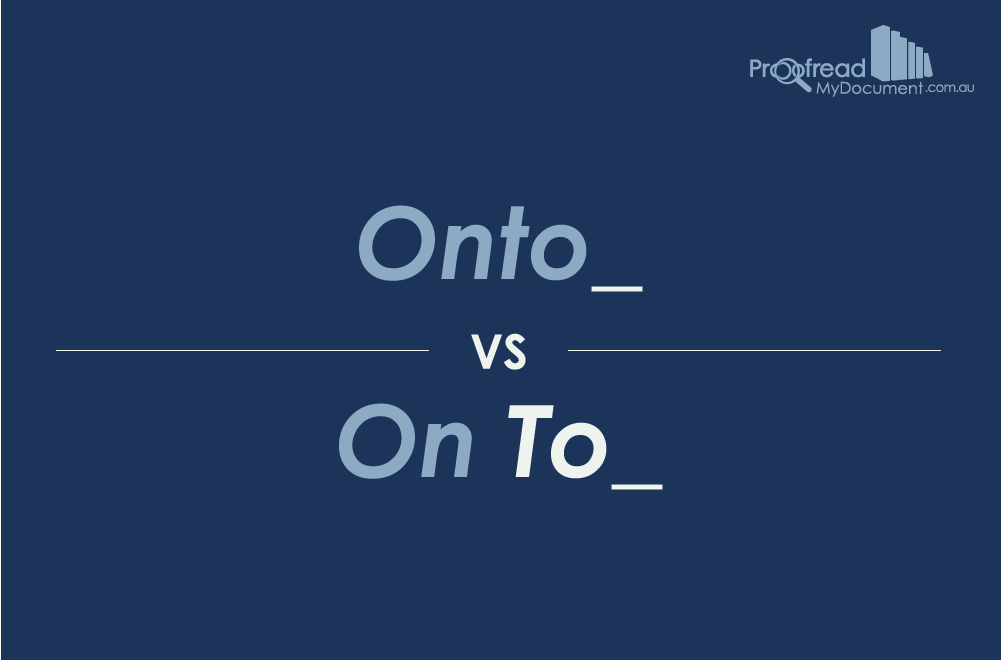Some grammarians get quite worked up about ‘on to’ and ‘onto’, insisting that ‘on’ and ‘to’ should always be kept separate. Kingsley Amis went as far as saying that, ‘I have found by experience that no one persistently using “onto” writes anything much worth reading.’
This, however, fails to reflect how language is used these days. ‘Onto’ is already common in American English and widely accepted in Australian English.
But there are some occasions when keeping ‘on’ and ‘to’ separate is important for clarity, especially in academic writing, so try to keep the following distinction in mind…
Onto (On Top)
The preposition ‘onto’ is simply a combination of ‘on’ and ‘to’, meaning ‘to position on top of’ something:
Kingsley Amis climbed onto his high horse, then fell off immediately.
‘Onto’ can also be used figuratively to mean ‘to understand’ or ‘to be aware of’ something:
When I misused a preposition, Kingsley Amis was onto it like a shot.
There’s also a technical definition of ‘onto’ used in mathematics, but even here it borrows the sense of mapping one set of information on top of another.
Thus, ‘onto’ is principally used when referring to something that is on top of something else.
Find this useful?
Subscribe to our newsletter and get writing tips from our editors straight to your inbox.
On To (As Part of a Phrasal Verb)
‘On’ and ‘to’ should be kept apart when ‘on’ is part of a verb phrase followed by the preposition ‘to’, such as in ‘hold on to’:
This boat is fast, so you’ll need to hold on to your hat when we get moving!
To put it simply, the ‘on’ in this sentence is part of the phrase ‘hold on’, not ‘on to’. As such, it would be wrong to use the ‘on’ as part of a preposition.
Admittedly, there isn’t much chance of confusion here, but things can be trickier with other verb phrases, like ‘move on’:
Once we’re done at the bar, we’ll move on to the restaurant.
Here, ‘move on’ is a verb phrase meaning ‘proceed’, while ‘to’ is a preposition indicating the destination. If we were to ‘move onto the restaurant’, however, it would imply climbing on top of the building. Which might make it hard to get served.
Onto or On To?
As the above demonstrates, it’s still important to distinguish between ‘onto’ and ‘on to’ now and then. Mostly, this will be with phrasal verbs containing ‘on’, as using ‘onto’ in such cases can be confusing.
However, as long as you remember that ‘onto’ is used when something is positioned on top of something else, it should be easy to avoid mistakes.
